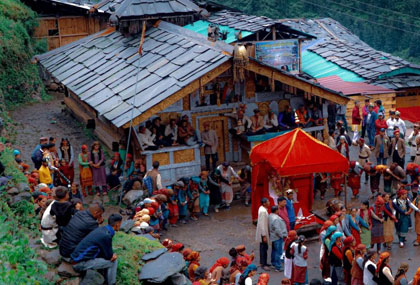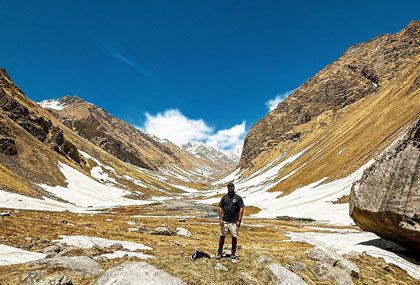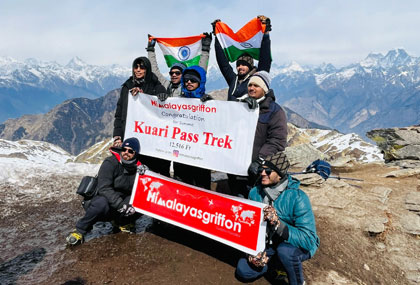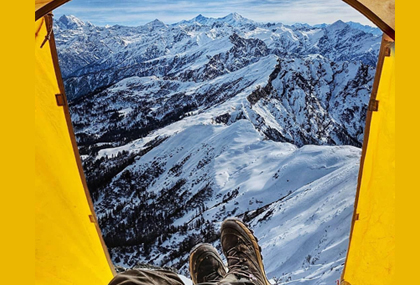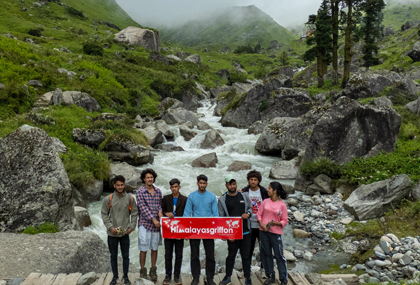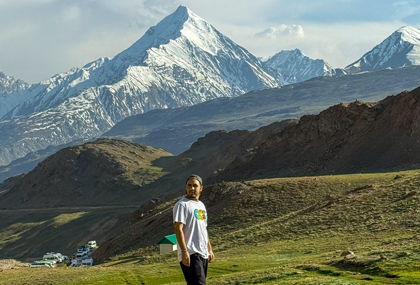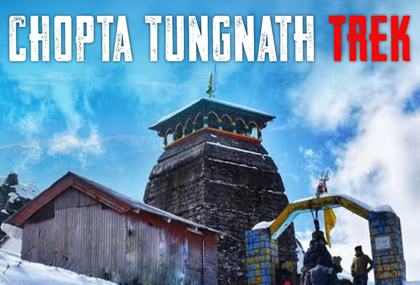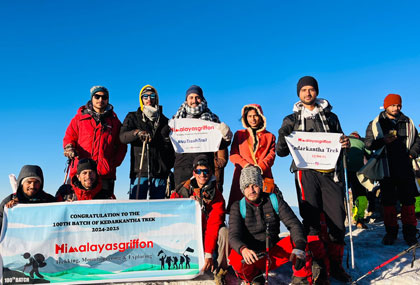Overview
✅ Best Time : Culture lovers, first-time trekkers, photography enthusiasts, and those seeking a short Himalayan escape.
✅ Duration: 4 Days / 3 Nights
✅ Max Altitude: ~2,590m
✅ Difficulty: Easy–Moderate

Osla Village Trek Itinerary
Day 1: Dehradun → Sankri (1,920m)
•Drive: 200 km | 8–9 hrs via Mussoorie – Purola – Mori
• Overnight stay in guesthouse/homestay at Sankri.
Day 2: Sankri → Taluka → Osla (2,590m)
• Drive: 12 km to Taluka
• Trek: 12–14 km (6–7 hrs) via Gangar village & dense pine forests
• Stay in Osla village homestay/campsite.
Day 3: Explore Osla Village
• Walk through wooden-carved houses & meet the locals
• Visit the ancient Duryodhana temple
• Experience village lifestyle, farming fields & Garhwali culture
• Optional short hikes around Osla for views of Swargarohini & Black Peak.
Day 4: Osla → Taluka → Sankri → Dehradun
• Trek back 12–14 km to Taluka
• Drive to Sankri, then onward journey to Dehradun.
Hidden deep in the Garhwal Himalayas of Uttarakhand, Osla Village is a place where time seems to stand still. Located at an altitude of around 2,590 meters (8,500 ft) on the banks of the Tons River, Osla is one of the most picturesque and culturally rich villages you encounter on the trek to Har Ki Dun Valley. With its wooden houses, unique traditions, and breathtaking landscapes, Osla is more than just a stopover—it’s an experience in itself.
🌄 The Setting
Surrounded by pine, deodar, and oak forests, Osla sits against a backdrop of towering Himalayan peaks. The village is home to about 200–250 families, and its wooden architecture reflects centuries-old Himalayan craftsmanship. As you walk through its narrow lanes, you’ll find yourself stepping into a world that feels untouched by modernity.
🙏 Culture & Traditions
Osla is famous for its wood-carved temple dedicated to Duryodhana, the controversial character from the Mahabharata. Local legends say that the villagers once considered Duryodhana their deity and worshipped him for centuries. Today, many traditions still survive, but the younger generation is slowly embracing modern influences.
The villagers are warm, welcoming, and deeply connected to their land. Their lifestyle revolves around farming, cattle rearing, and weaving, offering trekkers a chance to witness the authentic rhythm of Himalayan life.
🛖 Architecture
One of Osla’s most striking features is its traditional wooden houses built with intricate carvings and slate roofs. These homes are designed to withstand the harsh mountain winters and are a perfect example of sustainable Himalayan architecture.
🚶 Trekking to Osla
Osla lies on the route to Har Ki Dun Trek, one of Uttarakhand’s most scenic valley treks. The usual journey goes like this:
• Start from Sankri (base village).
• Trek through Taluka and Gangar Village.
• Reach Osla after about 12–14 km of trekking.
From here, trekkers usually continue towards Har Ki Dun Valley, but many choose to spend a night in Osla to soak in the village charm. Homestays run by locals are available, giving visitors a real taste of Garhwali hospitality.
🌿 Why Visit Osla?
• Experience a living Himalayan culture untouched by mass tourism.
• Explore the ancient temple of Duryodhana with its unique carvings.
• Stay in cozy local homestays and try authentic Garhwali food.
• Witness breathtaking views of Swargarohini, Black Peak, and Bandarpoonch ranges.
• A chance to truly disconnect and enjoy the simplicity of mountain life.
✨ Osla – A Living Heritage
Osla is not just a stop on the way to Har Ki Dun; it’s a destination in itself. With its myths, traditions, and warm-hearted people, the village offers an unforgettable blend of culture and natural beauty. Visiting Osla means stepping back in time, where every home tells a story and every trail leads to discovery.
So, if you are planning a trek in the Garhwal Himalayas, make sure you take a pause at Osla Village—because here, the Himalayas are not just about peaks, but also about people.

